Simple trick to not repeat mistakes
People often assume that, if we make mistakes in the past, the future will certainly not repeat.But one day there is a similar case at the moment and you have chosen the best possible option, the plan that you think is the best.You choose and act instinctively without knowing that you make a mistake again.Based on human psychology, they will often repeat similar actions, forming habits.
There are many people who want to change their bad habits , but to do that we may face difficulties and take a lot of time. However, you can set up a suitable plan, keep a positive attitude when working and set goals to avoid making the same mistakes.
Part 1: Recognize mistakes and learn about them
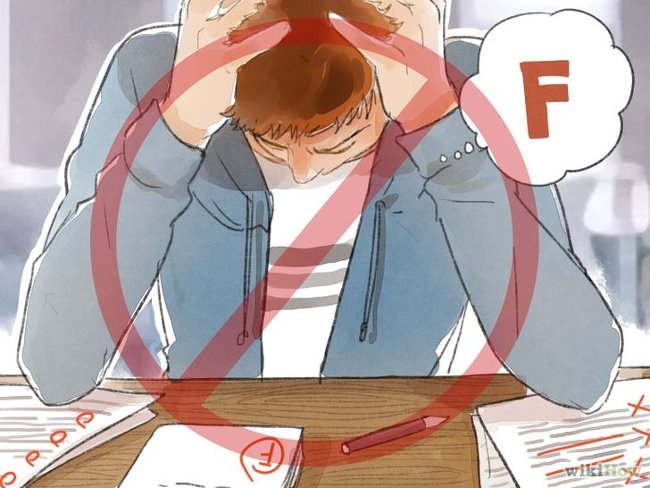
1. Don't be afraid to fail
Mistakes can be a good thing. That is the chance for you to learn the value from the mistakes you have made. Carefully review those mistakes, do them, and find out why you did it. In this way, mistakes can help you to succeed.
- Overconfidence can also make you miss information and make mistakes.
- Many cases or contexts are the cause of mistakes, when you feel tired often appear bad habits.

2. Don't think you can't avoid mistakes
In fact, this may be the reason why you continue to make mistakes and will not learn from those mistakes. So thinking can help you avoid making those mistakes. One study showed that the brain reacts to everything in just 0.1 seconds, which leads to mistakes made in the past. Use a way to send a warning signal to avoid repeating the same mistakes.
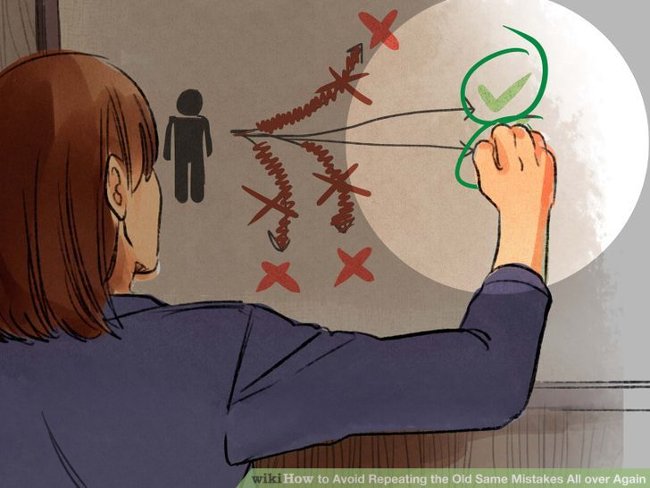
3. Focus on what you have done
While learning from yourself from the mistakes you've made, you should also focus on what you've done well. Focusing on what you have done, you can feel good about your efforts and try to do better to avoid making mistakes.
- List a list of all the things you have overcome and success achieved.
- Write down your good qualities.
- Reviewing the list is the driving force and prompting you to proceed.

4. Start fixing mistakes
As soon as you realize your mistakes, you can start fixing them. The methods used to correct mistakes are related to what you are trying to fix. Take a look at the example below to get more suggestions on some ways to fix mistakes you can do:
- If you often forget the billing date, try attaching stickers in the most visible places to remind yourself.
- Don't be afraid to ask for help.For example, if you are trying to cook soup according to your grandmother's recipe but are not good, ask her for tips.

5. Keep improving
Set yourself high goals to try to achieve. However, you can be more successful if you focus on improving yourself all the time, not just to achieve the end result.Perfection will make you always feel anxious about your goals and your progress.

6. Practice daily
Part of improving, achieving success and avoiding making mistakes in the past is to be fully trained. Daily exercise is important because it helps you get good skills and allows you to improve slowly over time. For example, you can cook soup according to the recipe she infused regularly to make it cook better.
- Spend time every day practicing.
- Log the time you spend making it
- If possible, try to gradually increase their time each day.
- If you can't do them every day, imagine them in your head.For example, if you don't have a guitar, you can imagine when you're playing a song.
Part 2: Ready to change
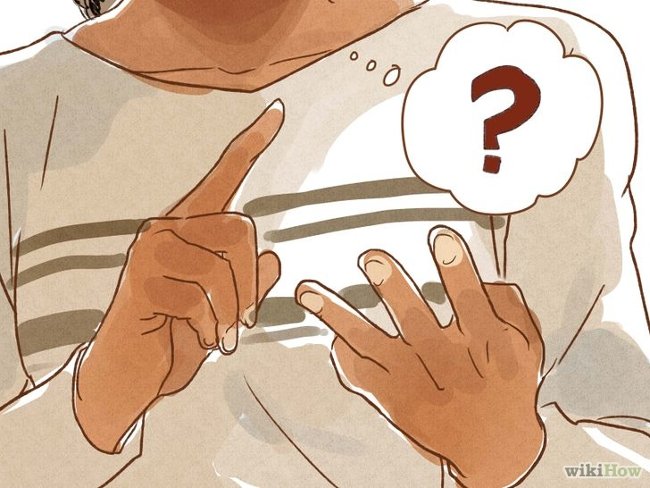
1. Outline what you want to change
Before you can avoid making the same mistakes or repeating the same actions, you will have to find out what you want to change. Carefully review the actions you want to change.
- Try to find the bad habits and actions you want to change the most.
- Do not spend too much time at the same time.Focus on the issues that you find most noticeable.

2. Find the cause of those actions
Examine the situations or circumstances that may cause similar mistakes or undesirable actions. Find out the reason behind the actions you want to change. As soon as you find the reason, you can change your reaction in that situation as well as avoid getting in the future.
- You realize that when stress will make you want to smoke a cigarette or eat a healthy snack.
- If you are worried about the current social context, you may find that it is the cause of drinking alcohol even if you don't want to.

3. Replace the old actions
When your goal is to stop repeating those old actions, you will need to replace them with another behavior. If you do not perform new behaviors, you will likely return to unwanted behaviors.
- For example, you can replace them by eating French fries with a bit of celery or sniffing 10 pieces.
- If you realize that you are easily angry, try new habits - take a deep breath before getting angry.

4. Write down the goal
After thinking about the actions to stop and what needs replacing, it's best to write them down. This helps you to check what you are trying to do at any time.
- Try writing things that need to be done on paper and put in places that you can often and easily see.For example, print and paste in your workplace or set reminders on your phone.
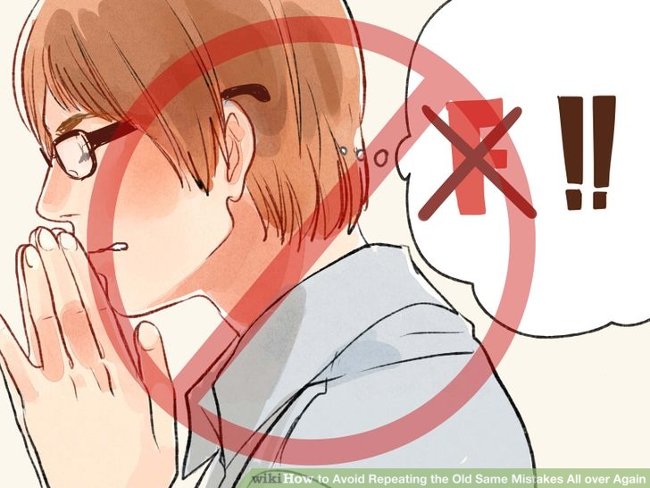
5. Don't be in a hurry
Changing old habits will be extremely difficult and time consuming. To be able to take the time to replace old habits into new ones you have chosen, follow the plan, always keep a positive attitude and achieve your goals.
- Changing a habit can take 15 to 254 days, depending on motivation, alternative actions and number of repetitions.
- Remind yourself of the goals you have set and the positive benefits of that change bring you.

6. Don't worry about failure
When carrying out the goals that have been set, replace old habits with new habits, don't let anything affect you. However, failure can still happen but does not mean you fail or waste that time. You can draw experience for yourself from those failures to try to achieve your goals.
- Failure can be a good thing - notice cases or situations that may make you make old mistakes before.
Part 3: Change

1. Think about what you want to change
The first step to making any change is to think carefully about what you want to change: the benefits of changing actions and difficulties you may encounter.
- Make a detailed list of benefits and new action positives that will bring you.
- Be careful with the difficulties you have thought of.This can cause you to return to your old habits and interfere with the implementation of new habits.
- For example, hard work out exercise can make you healthier but take a certain amount of time.
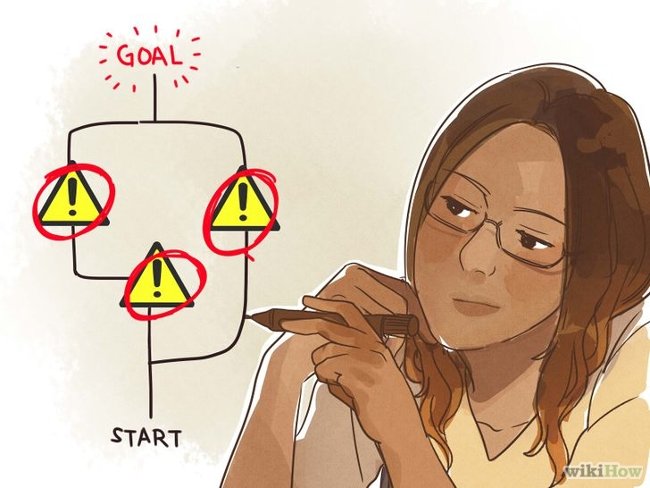
2. Prepare for obstacles
Before starting to make changes, you will need to prepare. The preparation phase includes a plan to deal with possible obstacles, hindering you from accomplishing your goals. Reasonably prepared, the changes you want to make the most will be easier.
- The preparation phase will help you be ready to solve the obstacles between you and your goals.
- For example, if you think there is not enough time as a problem to try to improve your practice, you will start planning your time or thinking of ways to do it in your spare time.

3. Start changing
After thinking about the new actions you want to do, how to overcome obstacles, you can start implementing. At this step, your focus will be needed both in the process of implementing, overcoming obstacles and being interested in new behaviors.
- Track your progress carefully, to keep motivated and find mistakes.
- Think of ways to overcome those obstacles.Avoiding situations or situations can cause you to use old actions.
- When you reach your goal, you will want to reward yourself.Watch a movie you love or take a shower to relax.

4. Maintain changes
When you replace old habits by choosing a new action. Keep a plan to take new action continuously and use these new actions.
- If possible, try to increase your original goals.For example, if you want to stop not exercising and become more active, increase your maintenance goals.
- Maintain interesting things.As you go about maintaining new actions, try doing them in different ways for interaction.For example, if you are trying to stop snacking by eating healthy, learn more new recipes.
- Always keep a positive attitude and don't let obstacles stop you.If there are obstacles, learn from it and continue to reach the goal.
You should read it
- Do not lose your job because of silly mistakes
- Bill Gates acknowledged the biggest mistake he ever made was to lose the smartphone market to Google
- 9 'crazy' mistakes that science once recognized it as true
- 10 serious mistakes when using Photoshop
- Mobile developers make the same mistake as web developers in the early 2000s
- The mistake to avoid when using a condom to 'love' is more secure
 Pygmalion effect and application in management activities at the enterprise (part 1)
Pygmalion effect and application in management activities at the enterprise (part 1) 9 'unwritten' principles of Warren Buffett
9 'unwritten' principles of Warren Buffett 18 things you will not know until adulthood
18 things you will not know until adulthood 4 benefits of reading a book habit more than once
4 benefits of reading a book habit more than once 6 secrets of a charming woman
6 secrets of a charming woman How Pokémon Go earns money - Pokémon Go's business model
How Pokémon Go earns money - Pokémon Go's business model